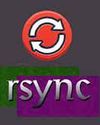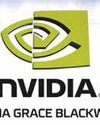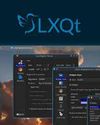
Emma, an aspiring young baker, decided to bake a cake. She cracked open a few eggs into a bowl and whisked them until they were light and frothy. She then sifted the flour, ensuring there were no lumps. Into this mixture, she carefully measured and added baking powder, sugar, a pinch of salt, and a dash of vanilla essence. For a twist, she decided to add cocoa powder. Emma mixed all the ingredients, blending them to form a smooth, velvety batter. She then prepared her baking pan, generously greasing it with butter and dusting it with flour, ensuring the cake would not stick. She poured the batter into the pan, smoothing the top with a spatula. Emma carefully placed the pan inside the oven and set the timer. Finally, the timer dinged, and Emma pulled out the perfectly baked cake. It was a masterpiece. Her friends devoured the delicious masterpiece in mere seconds, enjoying every bite without knowing the effort and passion that went into its creation.
This scenario is quite like the process of booting a PC, where Emma takes on the role of a diligent system admin and her friends represent the average PC user.
To the average user, pressing the computer’s power button seems like a simple action that magically brings the machine to life, granting access to its many features, just as they enjoyed the cake without pondering over the baking process. However, behind this seemingly effortless task lies a series of intricate steps, much like the cake’s journey from batter to dessert. As a seasoned system admin, Emma understands the complexity of what happens when the power button is pressed. Here’s a glimpse into this behind-the-scenes process.
This story is from the November 2024 edition of Open Source For You.
Start your 7-day Magzter GOLD free trial to access thousands of curated premium stories, and 9,000+ magazines and newspapers.
Already a subscriber ? Sign In
This story is from the November 2024 edition of Open Source For You.
Start your 7-day Magzter GOLD free trial to access thousands of curated premium stories, and 9,000+ magazines and newspapers.
Already a subscriber? Sign In

Red Hat unveils Red Hat OpenShift Virtualization Engine
Red Hat OpenShift Virtualization Engine is a new edition of Red Hat OpenShift that offers a dedicated solution for organisations to leverage the virtualisation capabilities already available within Red Hat OpenShift.

Spring AI: A Door to GenAI Heaven for Java Developers
Let's explore the Spring AI framework and its advantages, and look at how it is helping Java developers adopt AI.

Significant security vulnerabilities drive the release of Rsync 3.4
Rsync, the widely used utility for incremental file transfers and synchronisation, has released version 3.4. This update isn't packed with exciting new features but is instead critical due to several newly disclosed security vulnerabilities.

NVIDIA puts Grace Blackwell at every AI developer's fingertips
NVIDIA has introduced NVIDIA Project DIGITS, a groundbreaking personal AI supercomputer designed to empower AI researchers, data scientists, and students NVIDIA® NVIDIA GRACE BLACKWELL with the immense capabilities of the NVIDIA Grace Blackwell platform.

Top Tools for DevOps, Cybersecurity, and Cloud Management in 2025
In 2025, organisations will continue to rely on open source tools to retain a competitive edge. We look at why the best tools for DevOps, cybersecurity and cloud management will remain relevant and how best to integrate them into your organisation.

CREW: Open source platform to improve human-AI interaction
As human-AI collaboration deepens, critical questions arise: How should humans and AI complement one another? What kind of feedback enhances AI training? How can trust in AI be optimised to balance collaboration without over-reliance? Researchers at Duke University are addressing these challenges through CREW-an innovative platform designed to advance human-AI teaming.

Red Hat completes the acquisition of Neural Magic
Red Hat, Inc., has announced the completion of its acquisition of Neural Magic, a trailblazer in software and algorithms that accelerate generative AI (GenAI) inference workloads.

The Do's and Don'ts for Software Architects
Here's a list of best practices for software architects as well as the common mistakes they should try not to fall prey to.

openSUSE's Tumbleweed introduces Wayland support for the LXQt desktop environment
The openSUSE Project has announced that its Tumbleweed rolling release distribution now includes Wayland support for users of the LXQt desktop environment.

A Guide for Software Architects: Common Mistakes and Best Practices
Software architects play an invaluable role in the digital transformation of an organisation. To make a mark, they must imbibe certain qualities and avoid common errors.